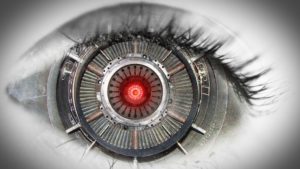Deep Learning: Advanced Computer Vision

Advanced Computer Vision and Convolutional Neural Networks in Tensorflow, Keras, and Python
What you’ll learn
- Understand and apply transfer learning
-
Understand and use state-of-the-art convolutional neural nets such as VGG, ResNet and Inception
-
Understand and use object detection algorithms like SSD
- Understand and apply neural style transfer
- Understand state-of-the-art computer vision topics
- Know how to build, train, and use a CNN using some library (preferably in Python)
- Understand basic theoretical concepts behind convolution and neural networks
- Decent Python coding skills, preferably in data science and the Numpy Stack
Description
This is one of the most exciting courses I’ve done and it really shows how fast and how far deep learning has come over the years.
When I first started my deep learning series, I didn’t ever consider that I’d make two courses on convolutional neural networks.
I think what you’ll find is that, this course is so entirely different from the previous one, you will be impressed at just how much material we have to cover.
Let me give you a quick rundown of what this course is all about:
We’re going to bridge the gap between the basic CNN architecture you already know and love, to modern, novel architectures such as VGG, ResNet, and Inception (named after the movie which by the way, is also great!)
We’re going to apply these to images of blood cells, and create a system that is a better medical expert than either you or I. This brings up a fascinating idea: that the doctors of the future are not humans, but robots.
In this course, you’ll see how we can turn a CNN into an object detection system, that not only classifies images but can locate each object in an image and predict its label.
You can imagine that such a task is a basic prerequisite for self-driving vehicles. (It must be able to detect cars, pedestrians, bicycles, traffic lights, etc. in real-time)
We’ll be looking at a state-of-the-art algorithm called SSD which is both faster and more accurate than its predecessors.
Another very popular computer vision task that makes use of CNNs is called neural style transfer.
This is where you take one image called the content image, and another image called the style image, and you combine these to make an entirely new image, that is as if you hired a painter to paint the content of the first image with the style of the other. Unlike a human painter, this can be done in a matter of seconds.
I hope you’re excited to learn about these advanced applications of CNNs, I’ll see you in class!
AWESOME FACTS:
- One of the major themes of this course is that we’re moving away from the CNN itself, to systems involving CNNs.
- Instead of focusing on the detailed inner workings of CNNs (which we’ve already done), we’ll focus on high-level building blocks. The result? Almost zero math.
- Another result? No complicated low-level code such as that written in Tensorflow, Theano, orPyTorch (although some optional exercises may contain them for the very advanced students). Most of the course will be in Keras which means a lot of the tedious, repetitive stuff is written for you.
NOTES:
All the code for this course can be downloaded from my github:
/lazyprogrammer/machine_learning_examples
In the directory: cnn_class2
Make sure you always “git pull” so you have the latest version!
HARD PREREQUISITES / KNOWLEDGE YOU ARE ASSUMED TO HAVE:
- Know how to build, train, and use a CNN using some library (preferably in Python)
- Understand basic theoretical concepts behind convolution and neural networks
- Decent Python coding skills, preferably in data science and the Numpy Stack
TIPS (for getting through the course):
- Watch it at 2x.
- Take handwritten notes. This will drastically increase your ability to retain the information.
- Write down the equations. If you don’t, I guarantee it will just look like gibberish.
- Ask lots of questions on the discussion board. The more the better!
- Realize that most exercises will take you days or weeks to complete.
- Write code yourself, don’t just sit there and look at my code.
WHAT ORDER SHOULD I TAKE YOUR COURSES IN?:
- Check out the lecture “What order should I take your courses in?” (available in the Appendix of any of my courses, including the free Numpy course)
- Students and professionals who want to take their knowledge of computer vision and deep learning to the next level
- Anyone who wants to learn about object detection algorithms like SSD and YOLO
- Anyone who wants to learn how to write code for neural style transfer
- Anyone who wants to use transfer learning
- Anyone who wants to shorten training time and build state-of-the-art computer vision nets fast
Created by Lazy Programmer Inc.
Last updated 11/2018
English
English [Auto-generated]
Size: 1.27 GB
https://www.udemy.com/advanced-computer-vision/.

hi there thank you for uploading this course but in this video section only one imp section is missing (Super-Resolution and Fast Style Transfer) so please upload it
many thanks for your hard work to make all this udemy course FREEE! keep this up man!
many thx man
Seed Please
Seed Please
Please seed this course.
Seed Please
Please Seed